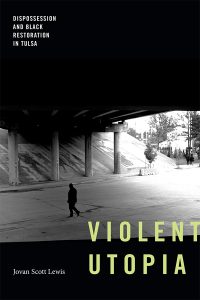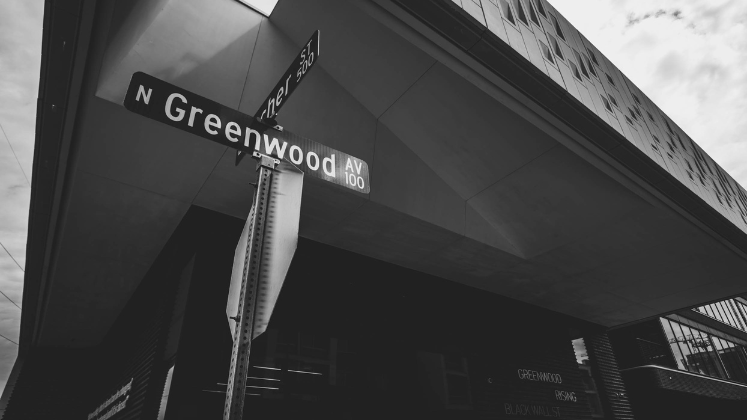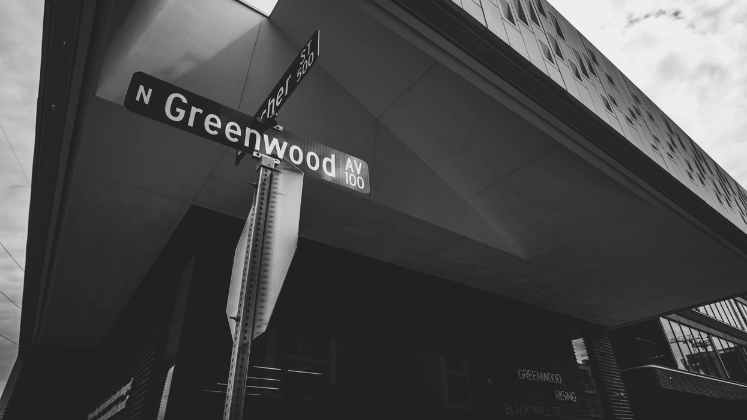Books Feed
E-book Evaluate: Violent Utopia: Dispossession and Black Restoration in Tulsa by Jovan Scott Lewis
Violent Utopia: Dispossession and Black Restoration in Tulsa. Jovan Scott Lewis. Duke College Press. 2022.
 For a piece accomplished throughout COVID-19 within the writer’s linen closet, Jovan Scott Lewis’s Violent Utopia: Dispossession and Black Restoration in Tulsa offers a very arresting evaluation of historic contestations over house. Right here, house possessed and dispossessed is a launchpad for freedom desires, a horizon of racial chance and engraved proof of centuries of dehumanising Black and Native People: all fertile but damaging imaginaries revealing the interlocking conflicts over house, politics and race within the ‘Sooner State’ of Oklahoma. Lewis, Chair of Geography on the College of California Berkeley, reveals how violence has slowly seeped into Tulsa’s current city panorama, changing into product, index and self-perpetuating guarantor of anti-Blackness.
For a piece accomplished throughout COVID-19 within the writer’s linen closet, Jovan Scott Lewis’s Violent Utopia: Dispossession and Black Restoration in Tulsa offers a very arresting evaluation of historic contestations over house. Right here, house possessed and dispossessed is a launchpad for freedom desires, a horizon of racial chance and engraved proof of centuries of dehumanising Black and Native People: all fertile but damaging imaginaries revealing the interlocking conflicts over house, politics and race within the ‘Sooner State’ of Oklahoma. Lewis, Chair of Geography on the College of California Berkeley, reveals how violence has slowly seeped into Tulsa’s current city panorama, changing into product, index and self-perpetuating guarantor of anti-Blackness.
Significantly because the 2021 centenary of 1921’s Tulsa Race Bloodbath, a lot of this story could also be acquainted to readers. But Violent Utopia’s first chapter usefully roots Tulsa’s story in longstanding dynamics of racialised contests over land, as first obvious in Tulsa’s beginnings as an 1830s Muscogee settlement following the Muscogee expulsion from Alabama.
First ‘settled’ by white populations because the San Francisco railroad arrived in 1882, Tulsa boomed into the ‘oil capital of the world’ with 1905’s discovery of the Glenn Pool Subject, quadrupling its inhabitants to 72,000 within the first decade after Oklahoman statehood in 1907 (12). A part of this growth was Black settlement centred in Greenwood, a neighborhood of roughly 4 sq. miles that reached a inhabitants of 9,000 by 1917. Socially and bodily segregated but economically sure to Tulsa, Greenwood was annexed by Tulsa in 1910, precipitating tighter restrictions on Black freedom of motion. In 1921, these racial anxieties exploded in essentially the most catastrophic incident of calculated racial terror in US historical past.
Lewis presents an in depth and expansive account of those occasions. But he additionally theoretically reorients his narrative in unison with broader current literature that understands racial violence not because the episodic or irregular outpouring of anger, emotion or intolerance, however quite as an on a regular basis structural mechanism foundational to US racial orders.
Lewis thus units Tulsa, 1921 as considered one of many referents – Evansville, 1903; Atlanta, 1906; Chicago, 1919 – which every point out each distinct outbreaks of extralegal violence and the underlying city environments that had been created, conditioned and stabilised by on a regular basis lawful White violence. Tulsa, 1921 was ‘concurrently damaging in addition to constructive’, resulting in an ‘arresting containment of Black Life’ that recalibrated and reasserted long-present White management over the town of Tulsa (27). Going through Tulsa’s subsequent ‘spatial-racial repair’, Lewis’s important activity is to discover ‘the juxtaposition of violence and Black freedom and progress in a direct evaluation of the paradoxical circumstances of Blackness in the USA’ (15).

Picture Credit score: ‘Secretary Fudge Visits Tulsa Oklahoma’ by U.S. Dept of Housing and City Improvement (HUD), Public Area
Violent Utopia painstakingly illustrates how ‘lengthy after the riot, that violence would proceed to mark the life and experiences and circumstances of Greenwood’s descendants, now situated in what was figured as North Tulsa’ (15). Dispossession names these overlapping blows of violence and isolation produced underneath the guise of integration, the ‘double wake of fabric privation by way of city renewal and the semiotic dispossession represented within the narrative of the bloodbath’ (5).
Chapters Two and Three, for instance, illustrate how the ‘sluggish massacres’ of municipal disinvestment, blockbusting, over-policing and Tulsa’s normal southward growth all mixed into North Tulsa’s present-day paucity of grocery shops and general service provision. Such marginalisation signifies the ‘precariousness and vulnerability of intergenerational poverty, a extra damning type of violence than any bloodbath’ (54). Toddler mortality and unemployment charges for Black Tulsans stay 3 times these of White Tulsans, while North Tulsa has half of South Tulsa’s median revenue and is 35 per cent deeply impoverished in comparison with 13 per cent in South Tulsa (55-56).
These statistical deficits are enlivened because the Tulsans Lewis meets are voiced throughout whole pages, their registers combining in a ‘Nice Gathering’ neighborhood session discussing opening a grocery retailer that speaks to the neighborhood’s persistent creativity. Right here, Lewis’s evaluation owes a lot to a wealthy intersection of historical past, economics and geography. But his moral disposition is acutely ethnographic, ‘anchored by an express dedication to the empirics that solely thoughtful and appreciable ethnography can command’ (ix).
A placing set of black-and-white pictures additionally evidences how Tulsa’s current panorama archives this violence. The notably resonant cowl {photograph} reveals an nameless man strolling underneath Interstate 244 the place it intersects and domineers over Greenwood Avenue, splitting the neighborhood and changing into ‘a damning metaphor for the neighborhood’s lack of ability to thoroughly overcome the forces of its dispossession’ (142). This {photograph} beckons the reader to discover how historical past may be mediated by way of such mundanity; how native indignities are meted out underneath the shadows of federal provision in a metropolis that, as of 2019, devoted a 3rd of its finances to policing and solely 4 per cent to socioeconomic growth (60).
Chapter 4’s thorough but readable account of reparation campaigns situates Greenwood as a robust historic ballast for these going through poverty, incapacity and the fixed alienation of Black humanity. Greenwood ‘served to articulate and validate the current’s issues, wants, and hopes’ and stays a ‘geography of reminiscence and aspiration’ (5).
But Lewis additionally underlines how the ‘Black Wall Avenue’ mythos that disproportionately celebrates Greenwood’s pre-Bloodbath financial prosperity sits uncomfortably alongside a dependency on exterior non-profits and church buildings that pursue neighborhood and behavioural ‘enchancment’ with Black Wall Avenue as their resurrectionary objective. Certainly, ‘Black Wall Avenue’ boosterism ties Tulsa’s remembrance into celebrating a prosperity undergirded by segregation, obscuring the intraracial inequality of what finally remained a extremely economically-concentrated district previous to the Bloodbath. Latest ‘Greenwood’-stamped gentrifying developments and the business fever surrounding 2021’s centennial left little room for such nuances of their seek for an uncomplicated and appropriable type of ‘normal Blackness’ (156).
Violent Utopia can be an essential landmark in Oklahoman historical past, its ultimate fifth chapter extending North Tulsa’s ‘repository of which means’ to ‘the geography of freedom that was Indian Territory’ (175). Transferring to displace plantation geography as the elemental ordering rules of Black spatial imaginaries, Lewis situates Indian Territory as a ‘major reference for the ethics and id that kind and encourage the North Tulsa Neighborhood’ (176).
Lewis stays attentive to the twinned expulsions of Indigenous teams from Indian Territory and the counter-Reconstruction violence that Black ‘Exodusters’ fled to Indian Territory to flee. But Indian Territory’s novel and in another way racialised territoriality – its capability to fulfil Reconstruction’s promise of ‘forty acres and a mule’ – grounded an alternate, materials conception of a self-determinist Black Utopia. North Tulsa, Lewis suggests, inherits this ethos, articulating a ‘full expertise of […] sovereign belonging, which is outlined by the phrases of inalienability and possession however successfully by a way of emplacement’ (196).
Exactly after Presidential recognition and well-liked depictions together with HBO’s Watchmen have afforded Tulsa’s Race Bloodbath an unprecedented cultural prominence, Violent Utopia is an instructive, theoretically-driven complement to primarily narrative accounts, together with Scott Ellsworth’s The Floor Breaking. Violent Utopia’s findings shed a looking mild on Oklahoman historical past however aren’t restricted to or by it. While humble sufficient to solely outline itself as a ‘minor contribution’ to the reparations motion, Violent Utopia’s nice power is an analytical dexterity that studiously balances the dialectical dance of anti-Black violence and Black freedom desires. Its theoretical virtuosity could admittedly limit its viewers, and the present symbolic energy of the ‘Black Wall Avenue’ mythos will undoubtedly show troublesome to displace. But Lewis’s principle at all times stays rooted in ethnographic sensitivity, providing a stirring examination of Tulsa’s less-told story which asserts each historic geography’s analytical potential and its international resonance with the inexhaustible pursuit of place-based freedom.
Notice: This assessment provides the views of the writer, and never the place of the LSE Evaluate of Books weblog, or of the London College of Economics and Political Science.



